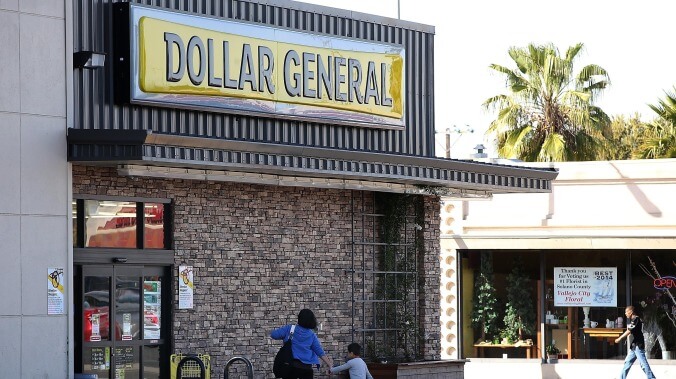Read This: How dollar stores scammed America to become worth more than Coca-Cola
Surprise—the too-good-to-be-true store is exactly that

If you have driven more than approximately 2 miles anywhere in America, chances are you’ve come across a Dollar General, Dollar Store, or Family Dollar. If you happen to drive 3 or more miles, then you’ll most likely see all 3.
It doesn’t take a trained economist to understand how these so-called “bargain” outlets have spread across the U.S. landscape—it’s psychologically comforting to know the apparently cheap price of everything in a given store without needing to give it much thought. Throw in a crumbling American Dream, and you got yourself a recipe for business success.
It’s also a recipe comprised largely of opportunistic scamming, as a recent infographic by Zachary Crockett over at The Hustle makes very plain. After all, you don’t reach 34,000 stores across the country (with a new location opening roughly every 6 or so hours) by operating at a net loss. You do so by tricking your customers into believing they’re getting great, cheap deals on name-brand items, when in fact they’re simply paying more for less product.
“For every $1 in sales, Dollar General and Dollar Tree earn an average gross profit of ~$0.30,” reads Crockett’s report. “That’s more than rivals like Target ($0.28) and Walmart ($0.24).” These stores also buy bulk surplus and discontinued items, further increasing their overall profit margins. “That $1 Old Spice deodorant might seem like a good deal. But at 0.8 oz., it’s less than one-third the size of the standard 3 oz. stick—and on a per-unit basis, it’s significantly more expensive than the larger-sized offerings at other retailers.”
Okay, so you’re technically paying more for the convenience, right? That’s not terrible, given that these outlets are essentially, well, “convenience stores.” But here’s where it gets particularly gross: dollar stores are targeting demographics who either aren’t educated enough to spot the scam or who don’t make enough to have much choice in where and when they buy their household necessities.
“The core demographic of dollar stores—lower-income families who earn less than $40K per year—are often living paycheck to paycheck and can’t afford to buy in larger quantities, even if it means getting a better deal,” Crockett explains.
Desperation breeds profit for these dollar stores, and it’s a business model that has, perhaps unsurprisingly, proven extremely successful—there are more of these stores than all the Walmarts, CVS, Walgreens, and Targets combined. So yeah, you might wanna consider buying your pool floaties and Chef Boyardee Spaghettios somewhere more ethical like… well… um… damn.
Send Great Job, Internet tips to [email protected]